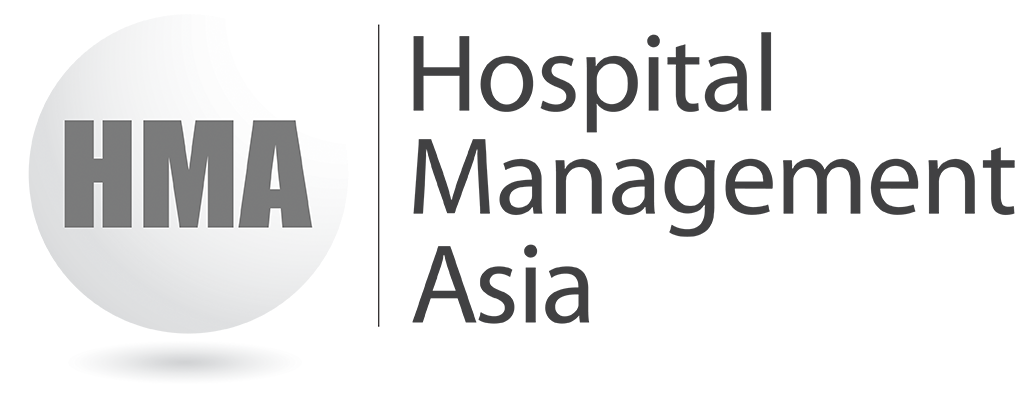|
Xung đột nội bộ - câu chuyện muôn thuở chốn công sở mà bất kỳ doanh nghiệp nào cũng phải đối mặt, minh chứng là theo nghiên cứu của CPP, có đến 85% nhân viên ở mọi cấp độ đều trải qua xung đột nội bộ. Các vấn đề xung đột nội bộ giữa người quản lý và nhân viên hoặc giữa nhân viên và nhân viên thường xuất phát từ 4 mâu thuẫn chính sau đây: - Xung đột dựa trên nhiệm vụ: nghĩa là nhiệm vụ sẽ bị xung đột nếu một trong các thành viên trong nhóm làm trễ tiến độ. Giả sử trường hợp các nhân viên thu thập dữ liệu khảo sát trễ hạn sẽ ảnh hưởng đến nhân viên phân tích dữ liệu và lập báo cáo thống kê cũng sẽ bị dời hạn theo. Để tránh xung đột này, cần phân chia nhiệm vụ các thành viên trong nhóm một cách rõ ràng, có người giám sát và hệ thống phần mềm hỗ trợ theo dõi cũng như đốc thúc tiến độ làm việc của nhân viên. - Xung đột về phong cách lãnh đạo: tùy thuộc vào văn hóa làm việc và tính cách các thành viên trong đội nhóm sẽ có những phong cách lãnh đạo tương ứng khác nhau. Ví dụ trường hợp các thành viên trong đội nhóm hoạt động ở lĩnh vực giải trí sáng tạo thì phong cách lãnh đạo độc đoán sẽ dễ gây nên sự bất mãn giữa nhân viên với sếp. Thay vào đó, phong cách lãnh đạo dân chủ cởi mở tiếp nhận ý kiến mọi người sẽ phù hợp hơn. - Xung đột về phong cách làm việc: mỗi cá thể khác nhau sẽ có cách tiếp cận hoàn thành nhiệm vụ khác nhau. Có người sẽ yêu thích tác phong làm việc nhanh gọn lẹ, có người lại đề cao tác phong làm việc chậm rãi, cẩn thận hơn. Hoặc có người chỉ cần hướng dẫn sơ qua và tự tìm hiểu cách thực hiện, nhưng cũng có người cần sự chỉ dẫn từng bước rõ ràng thì mới thực hiện được công việc. Chính vì vậy, cách để giải quyết xung đột này là nhà lãnh đạo cần quan sát, hiểu rõ phong cách làm việc của mỗi thành viên trong đội nhóm để có cách tương tác, hỗ trợ tương ứng. - Xung đột về tính cách: sự khác biệt về tính cách giữa các thành viên trong nhóm là điều chắc chắn sẽ gặp phải. Để dung hòa được sự khác biệt này, cần các thành viên phải có sự thấu hiểu cho tính cách của nhau. Bởi trên thực tế, có đến 49% nhân viên coi xung đột giữa tính cách hoặc “cái tôi” là nguyên nhân hàng đầu dẫn đến xung đột tại nơi làm việc (Gitnux, 2023). Vì vậy, đối với những người có cái tôi quá cao cần suy xét hạn chế điều này trong tập thể để có cái nhìn khách quan hơn về quan điểm của người khác. Đối với những xung đột vừa kể trên, nếu không được giải quyết kịp thời sẽ làm giảm 22% hiệu suất so với môi trường làm việc không thường xuyên xảy ra xung đột (Gitnux, 2023). Có thể thấy, để tránh tác động tiêu cực này, nhà lãnh đạo, cụ thể hơn là cấp quản lý trực tiếp đóng vai trò quan trọng lên đến 75% trong việc quản lý xung đột hiệu quả (ZipDo, 2023). Như vậy, một số bước để nâng cao kỹ năng giải quyết xung đột cho nhà quản lý trực tiếp gồm: - Bước 1: Giữ bình tĩnh Trong những tình huống căng thẳng của xung đột nội bộ, trước khi lên tiếng giải quyết mâu thuẫn, nhà lãnh đạo cần bình tĩnh quan sát tình huống sự việc. Việc quan sát này sẽ giúp ích cho các nhà lãnh đạo suy ngẫm xem nguồn cơn chính gây nên xung đột và định hướng khắc phục đề xuất. - Bước 2: Tạo không gian và thời gian thích hợp để giải quyết xung đột Khi cuộc xung đột bớt căng thẳng, nhà lãnh đạo sẽ chủ động tạo cuộc hẹn riêng tư giữa các nhóm thành viên đang gặp xung đột với nhau. Sau đó, nhà lãnh đạo sẽ chủ động lắng nghe, thu thập ý kiến từ cả hai bên, đồng thời, khuyến khích hai bên cũng nên cởi mở để chia sẻ một cách tôn trọng những vấn đề chưa hài lòng ở nhau và mong muốn cùng nhau khắc phục. Đặc biệt, trong giai đoạn này cũng nên kết hợp việc ghi chú lại những tác nhân dẫn đến xung đột nội bộ để hạn chế xung đột tiềm ẩn này trong tương lai. - Bước 3: Chấp nhận vấn đề xung đột Việc người trong cuộc cũng nhận biết được rằng vấn đề đang gặp xung đột là gì sẽ giúp nâng cao tỷ lệ nhân viên tham gia đưa ra các biện pháp giải quyết xung hơn. - Bước 4: Lập kế hoạch giải quyết xung đột Kế hoạch giải quyết xung đột cần có sự đồng thuận và thỏa hiệp từ các bên tham gia. Trong đó, giải pháp cần đi kèm các hành động cụ thể nhằm giải quyết tương ứng với các tình huống mâu thuẫn vừa phát sinh và kế hoạch dự phòng cho những tình huống mâu thuẫn liên quan khác có thể xảy ra. - Bước 5: Theo dõi tiến độ thực hiện kế hoạch giải quyết xung đột Đặt lịch kiểm tra định kỳ hằng tuần để theo dõi mọi người có đang thực hiện đúng kế hoạch giải quyết xung đột đã cam kết từ trước hay không? Nếu có thì tiến triển hiệu quả của kế hoạch đó như thế nào, có điều gì cần cải thiện tốt hơn? Nếu không thì lý do vì sao và định hướng khắc phục là gì? Trên đây là những cách hỗ trợ nhà lãnh đạo nâng cao kỹ năng giải quyết xung đột. Trong một số trường hợp nếu xung đột diễn ra quá căng thẳng và các biện pháp đưa ra đều không khả thi thì cần tham vấn thêm bộ phận nhân sự, các chuyên gia hòa giải hoặc các cấp lãnh đạo cao hơn trong công ty. - Có điều gì ở hiệu suất đội nhóm mà các cấp lãnh đạo, quản lý trong doanh nghiệp cần cải thiện? → Làm bài test để nhân ngay kết quả phân tích kỹ năng cần cải thiện: https://proacademy.involve.me/how-productive-is-your-team Training 4.0 People Empowerment RPO
Pro EduX HR Audit Train The Trainers Future Leadership Program Workforce Competency Center Pro Career Coaching
0 Comments
So với tuần đầu tháng 11, tổng nhu cầu tuyển dụng tuần vừa qua giảm 168 vị trí, hiện tuyển khoảng 3823 nhân sự trên toàn quốc. Trong đó, nhiều nhóm ngành tuần này như tài chính, bán lẻ, hàng tiêu dùng,... bị giảm mạnh. Một số nhóm ngành khác gồm Software, bất động sản và xây dựng, F&B,... tuy có tăng nhưng không đáng kể. Cụ thể, ngành công nghệ thông tin có IT và Internet giảm trong tuần vừa qua, lần lượt cần tuyển 327 và 196 nhân sự. Điểm sáng duy nhất trong ngành công nghệ thông tin là sự tăng trở lại của Software, hiện tuyển 306 nhân sự. Cơ hội việc làm tập trung tại TP.HCM. Đồng thời, cả 3 nhóm ngành đều ưu tiên tuyển dụng Middle-senior level. Cả tài chính, ngân hàng và bảo hiểm đều đồng loạt giảm trong tuần này. Với ngân hàng hiện tuyển 73 nhân sự, tài chính cần tuyển 78 nhân viên, bảo hiểm còn 20 vị trí trống cần tuyển. Cơ hội việc làm chủ yếu tập trung tại Hà Nội. Đồng thời, cả 3 nhóm ngành đều ưu tiên tuyển dụng Middle-senior level. Cả bất động sản, bất động sản thương mại và xây dựng đều tăng trong tuần vừa qua. Trong đó, xây dựng tăng mạnh nhất, hiện tuyển 15 nhân sự. Còn bất động sản và bất động sản thương mại tăng nhẹ, lần lượt cần tuyển 27 và 7 nhân sự. Cơ hội việc làm tại TP.HCM và Hà Nội gần tương đương nhau. Đồng thời, cả 3 nhóm ngành đều ưu tiên tuyển dụng vị trí Middle-senior level. F&B tiếp tục duy trì trạng thái tăng trong những tuần qua, hiện tuyển 57 nhân sự. Còn Food Production bị giảm đáng kể trong tuần vừa qua, còn tuyển 35 nhân sự. Cơ hội việc làm tập trung tại TP.HCM với tổng khoảng 22 vị trí cần tuyển. Trong đó, vị trí cần tuyển nhiều nhất là Middle-senior level. Nhóm ngành bán lẻ và hàng tiêu dùng bị giảm mạnh trong tuần vừa qua, lần lượt còn tuyển 50 và 48 nhân sự. Còn nhóm ngành thời trang giảm nhẹ, có 24 vị trí trống cần tuyển. Riêng nhóm ngành điện tử tiêu dùng vẫn giữ nguyên số vị trí tuyển dụng so với 2 tuần trước đó, vẫn tuyển 15 vị trí. Cơ hội việc làm đa phần tập trung tại TP.HCM. Đồng thời, cả 4 nhóm ngành đều cần tập trung tuyển dụng Middle-senior level. Training 4.0 People Empowerment RPO
Pro EduX HR Audit Train The Trainers Future Leadership Program Workforce Competency Center Pro Career Coaching Đặt mục tiêu là một trong những phần không thể thiếu để một nhà lãnh đạo có định hướng rõ ràng cho cả bản thân và đội nhóm về những gì họ cần nỗ lực đạt được sắp tới. Để đặt ra mục tiêu phù hợp cho cả đội nhóm đòi hỏi nhà lãnh đạo cần có các kỹ năng nhất định trong việc xác định và đặt mục tiêu. Sau đây là 5 điều các nhà lãnh đạo cần quan tâm khi đặt mục tiêu: 1. Mục tiêu cần có sự rõ ràng: Đây là một trong những điều quan trọng đầu tiên mà bất kể khi nào nhắc đến mục tiêu đều cần tuân theo. Mục tiêu càng chi tiết và rõ ràng thì người nhân viên sẽ càng dễ để biết hướng tiếp theo họ cần thực hiện là như thế nào. Đơn cử như việc thay vì chỉ đặt mục tiêu cho tháng 11 năm 2023 là tăng lợi nhuận thì nên cụ thể hóa mục tiêu là tăng lợi nhuận ở mức bao nhiêu % so với khoảng thời gian cụ thể trước đó. Như vậy mục tiêu mới về tăng lợi nhuận sẽ nên là tăng 15% lợi nhuận doanh nghiệp so với tháng 10 năm 2023. Tương tự như vậy, với những mục tiêu khác cũng cần tuân theo sự rõ ràng trong mục tiêu để giúp mục tiêu dễ hình dung và tăng khả năng đạt được hơn. Có một nguyên tắc mà mọi người rất hay sử dụng khi đặt mục tiêu là nguyên tắc SMART gồm các thành tố: - Specific (Mục tiêu cụ thể): Mục tiêu không được chung chung, phải rõ ràng để có thể định hướng cho bước lập bản kế hoạch chi tiết thực thi. - Measurable (Có thể đo lường được): Mục tiêu đi kèm với các công cụ đo lường cụ thể phù hợp ở từng giai đoạn sẽ giúp nhà lãnh đạo đánh giá được tiến trình thực hiện dễ dàng hơn và có kế hoạch điều chỉnh phù hợp để đảm bảo mục tiêu được hoàn thành đúng hạn định đặt ra. - Attainable (Khả năng thực thi): Khi lập kế hoạch, nhà lãnh đạo nên quan sát nguồn lực xung quanh gồm cả nhân lực, vật lực và tài lực để quyết định xem khả năng thực thi để đạt được mục tiêu của đội ngũ sẽ tới mức độ nào. Trong đó, đối với nguồn lực doanh nghiệp thì 5 chữ M mà nhà lãnh đạo cần cân nhắc khi xem xét khả năng thực thi gồm: + Man: nguồn nhân lực (Những ai sẽ thực hiện công việc, họ có đủ trình độ, kinh nghiệm, kỹ năng, phẩm chất, tính cách phù hợp? Ai hỗ trợ? Ai kiểm tra? Nếu cần nguồn phòng ngừa thì có đủ nguồn lực con người để hỗ trợ không?) + Money: Kinh phí triển khai + Material: nguyên vật liệu/hệ thống cung ứng (Xác định tiêu chuẩn nguyên vật liệu? Tiêu chuẩn nhà cung ứng? Phương pháp và thời hạn giao hàng?) + Machine: dây chuyền máy móc, thiết bị công nghệ + Method: phương pháp làm việc. - Relevant (Liên quan thực tế): Một mục tiêu đi kèm với khả năng thực hiện là mục tiêu cần có tính thực tế. Tính thực tế ở đây được nhìn nhận dựa trên bối cảnh nội bộ doanh nghiệp và các yếu tố bên ngoài tác động đến doanh nghiệp, đồng thời, cân nhắc các công cụ, kỹ năng cần trang bị để đạt được mục tiêu đó đã phù hợp với tình hình hiện tại và khả năng thực thi của doanh nghiệp. - Time bound (Thời gian hoàn thành): Mục tiêu cần có hạn định đặt ra rõ ràng để định hướng cả đội nhóm cùng nhau nỗ lực thúc đẩy năng suất làm việc và tuân theo các nguyên tắc, kỷ luật về thời gian để đạt được nhiệm vụ đặt ra trước hoặc đúng thời gian hoàn thành. 2. Tính thử thách: Một mục tiêu quá an toàn sẽ không thể khiến đội nhóm bứt phá. Chính vì vậy, trước khi đặt mục tiêu, nhà quản lý cần quan sát từng thành viên trong đội nhóm của mình để biết được với thế mạnh của các thành viên và giúp họ cũng như cả đội nhóm khai phá thế mạnh đó qua những mục tiêu mang tính thử thách vừa phải. Việc đặt mục tiêu có tính thử thách sẽ giúp bản thân người thực hiện có thêm động lực để phấn đấu bởi họ biết rằng mục tiêu càng thử thách thì giá trị họ nhận được càng cao. 3. Tính cam kết: Mục tiêu cần có sự cam kết từ người thực hiện, nghĩa là người thực hiện cần toàn tâm toàn ý đặt sự cố gắng và quyết tâm của mình vào mục tiêu đặt ra. Bởi chỉ có như vậy thì kết quả thực hiện mục tiêu mới đạt được hiệu quả cao. Một trong những cách để tăng tính cam kết khi thực hiện mục tiêu chính là hình dung hình ảnh bản thân sẽ nhận lại giá trị và lợi ích gì khi hoàn thành mục tiêu đó. 4. Sự phản hồi: Việc thực hiện mục tiêu và các cột mốc đạt được nên được chia thành các khoảng thời gian nhỏ khác nhau để có thể theo dõi và đánh giá hiệu quả định kỳ theo ngày, tuần hoặc tháng. Đồng thời, nên nhờ sự trợ giúp từ những đồng nghiệp và cấp trên đáng tin cậy để họ đưa ra các phản hồi về mục tiêu và cách tiến hành mục tiêu của bản thân đã hợp lý hay chưa. Việc thường xuyên theo dõi và tiếp nhận phản hồi từ mọi người xung quanh sẽ giúp bạn có cơ hội nhìn nhận kịp thời và điều chỉnh mục tiêu mới hoặc hướng hành động mới phù hợp hơn với những định hướng của nhà lãnh đạo trong tương lai. 5. Quản lý mục tiêu thường xuyên: Trong quá trình đặt mục tiêu, bạn không nên quá áp lực rằng tất cả các mục tiêu đều cần được thực hiện ngay một khoảng thời gian nhất định. Bạn có thể chia nhỏ mục tiêu thành những mốc ngắn hạn cụ thể để hỗ trợ cho những mục tiêu dài hạn sau này. Thêm vào đó, cũng cần quan tâm đến cảm nhận của bản thân khi thực hiện mục tiêu rằng mục tiêu đó có khiến bạn thường xuyên rơi vào trạng thái căng thẳng, lo lắng hay không? Nếu câu trả lời là có thì cần quản lý lại mục tiêu đặt ra và xem xét có nên điều chỉnh mục tiêu và khoảng thời gian thực hiện hay không? Và có thể chia nhiệm vụ thành các nhiệm vụ nhỏ hơn để dễ quản lý hay không? Trên đây là những cách hữu hiệu giúp các nhà lãnh đạo có thể tối ưu hóa quá trình từ đặt mục tiêu cho đến thực hiện mục tiêu. Trong đó, quá trình đặt mục tiêu cần tuân theo nguyên tắc SMART và luôn hướng đến sự rõ ràng là yếu tố quan trọng hàng đầu của một mục tiêu hiệu quả. Bên cạnh đó, trong quá trình thực hiện mục tiêu, thường xuyên chia nhỏ các mốc thời gian để kiểm tra, nhìn nhận và đánh giá lại mục tiêu hiện tại để có định hướng điều chỉnh mục tiêu mới phù hợp hơn. - Bạn có biết cấp độ về khả năng lãnh đạo của các nhà quản trị trong doanh nghiệp? - Họ có trang bị đủ kĩ năng giúp doanh nghiệp tối ưu hoá công việc và lợi nhuận? → Làm bài test để nhân ngay kết quả phân tích kỹ năng cần cải thiện: https://proacademy.involve.me/how-productive-is-your-team Training 4.0 People Empowerment RPO
Pro EduX HR Audit Train The Trainers Future Leadership Program Workforce Competency Center Pro Career Coaching Bạn đã bao giờ rơi vào tình trạng phải giải quyết rất nhiều việc trong một ngày nhưng kết quả nhận lại vẫn không đạt hiệu quả so với mục tiêu ban đầu? Nếu bạn đang gặp vướng mắc trên thì hãy đi tìm lời giải thông qua ma trận quản lý thời gian Eisenhower (còn gọi là ma trận ưu tiên Eisenhower). Ông Dwight D. Eisenhower - cựu tổng thống Hoa Kỳ cũng là người sáng lập ma trận này đã từng có một phát biểu kinh điển: “Những gì quan trọng thì hiếm khi khẩn cấp và những gì khẩn cấp thì hiếm khi quan trọng”. Câu nói này một lần nữa khẳng định cần phân biệt rõ ràng giữa “khẩn cấp” và “quan trọng”: - Khẩn cấp: là những việc có thời hạn ngắn, thường gây sự chú ý tức thì và cần hoàn thành kịp thời để tránh gây hậu quả về sau. - Quan trọng: là những công việc hướng đến các giá trị và mục tiêu dài hạn cho cá nhân. Các mục tiêu này liên quan đến phát triển bản thân, sự nghiệp, xây dựng các mối quan hệ,... Như vậy, dựa vào hai tiêu chí vừa mới giải thích, ma trận này sẽ được thiết lập trên hai trục về mức độ khẩn cấp và mức độ quan trọng với 4 ô cụ thể gồm: (1) Khẩn cấp và quan trọng (2) Không khẩn cấp và quan trọng (3) Khẩn cấp và không quan trọng (4) Không khẩn cấp và không quan trọng Đầu tiên, đến với góc phần tư thứ nhất “Khẩn cấp và quan trọng” đi kèm với hành động “thực hiện ngay” để không ảnh hưởng đến mục tiêu dài hạn. Các vấn đề cần giải quyết ngay lập tức trong đây có thể là cuộc họp khẩn cấp, bản báo cáo cần nộp trong ngày, email cơ hội kinh doanh mới cần hành động ngay,... Các công việc khẩn cấp này cần được tập trung hoàn thành sớm nhất có thể. Điển hình, trường hợp bản báo cáo cần nộp trong ngày, thay vì chờ đến gần sát hạn nộp mới làm thì nên tranh thủ làm ngay từ sớm để tập trung thời gian thực hiện việc quan trọng khác. Đến với góc phần tư thứ hai “Không khẩn cấp và quan trọng” đi kèm với hành động “lên lịch thực hiện rõ ràng”. Bởi trong góc phần tư này sẽ tập trung vào các công việc không có thời hạn quá cấp bách nhưng những nhiệm vụ này lại đóng góp giá trị to lớn cho mục tiêu cá nhân đặt ra, vì vậy, cần phải thiết lập thời hạn cụ thể rõ ràng và đặt ra nguyên tắc kỷ luật bản thân cần tuân theo. Theo nhà tư tưởng kinh doanh Stephen R. Covey đã từng đề cập trong cuốn sách The 7 Habits of Highly Effective People (7 thói quen của người làm việc hiệu quả cao), góc phần tư thứ hai này được gọi chất lượng, mang lại lợi ích năng suất cao. Tuy nhiên, ông cho biết phần lớn mọi người chỉ dành khoảng 30.8 % thời gian ở đó. Và đây là một trong những nguyên nhân chính khiến mọi người dù làm nhiều việc nhưng vẫn không đạt được kết quả như kỳ vọng. Do đó, cần thay đổi nhận thức và tập trung thực hiện các nhiệm vụ ở góc phần tư thứ hai này để tối ưu hóa năng suất làm việc. Tiếp theo, đến với góc phần tư thứ ba “Khẩn cấp và không quan trọng” đi kèm với hành động “ủy thác”. Thường những việc khẩn cấp nhưng không quan trọng trong đây có thể phát sinh từ các việc nhỏ như phản hồi tin nhắn, email, cuộc gọi đến lặt vặt; những cuộc họp trao đổi ngắn; bạn bè đồng nghiệp nhờ giúp đỡ chuyện cá nhân của họ,... Đối với các công việc này, do tính chất không quan trọng, nghĩa là không tác động nhiều đến mục tiêu cá nhân dài hạn, các nhà lãnh đạo có thể cân nhắc phương án ủy thác. Ủy thác đúng lúc là khi nhà lãnh đạo cảm thấy khối lượng công việc quá tải và trong đó gồm các công việc không quan trọng, họ có thể giao nhiệm vụ cho cấp dưới xử lý và nhờ vậy hỗ trợ quản lý khối lượng công việc hiệu quả hơn. Cuối cùng là góc phần tư thứ tư “Không khẩn cấp và không quan trọng” đi kèm với hành động “hạn chế hoặc loại bỏ”. Các hoạt động trong đây thường chỉ là lướt các trang mạng xã hội, xem phim, chơi game, tán gẫu với bạn bè,... Vì thế, lời khuyên là chỉ nên dành ra khoảng 5% thời gian cho các hoạt động này hoặc thậm chí nếu có một số thói quen như lướt web vô định hằng giờ thì nên tập loại bỏ dần để tránh lãng phí thời gian của bản thân. Như vậy, thông qua ma trận quản lý thời gian Eisenhower, một số điều quan trọng cần nắm rõ gồm khái niệm giữa “việc quan trọng” và “việc khẩn cấp”, mục tiêu dài hạn bản thân đặt ra và các nhiệm vụ quan trọng cần thực hiện để đạt được mục tiêu đó, xác định rõ thứ tự ưu tiên các nhiệm vụ, thường xuyên theo dõi hiệu quả các nhiệm vụ thực hiện có tương ứng với mục tiêu dài hạn đặt ra hay không để có điều chỉnh phù hợp nhằm giúp nhà lãnh đạo nâng cao năng suất làm việc. - Bạn có biết cấp độ về khả năng lãnh đạo của các nhà quản trị trong doanh nghiệp? - Họ có trang bị đủ kĩ năng giúp doanh nghiệp tối ưu hoá công việc và lợi nhuận? → Làm bài test để nhân ngay kết quả phân tích kỹ năng cần cải thiện: https://proacademy.involve.me/how-productive-is-your-team Training 4.0 People Empowerment RPO
Pro EduX HR Audit Train The Trainers Future Leadership Program Workforce Competency Center Pro Career Coaching So với tuần cuối tháng 10, tổng nhu cầu tuyển dụng tuần vừa qua tiếp tục tăng nhẹ hơn 60 vị trí, hiện tuyển khoảng 3991 nhân sự trên toàn quốc. Trong đó, các ngành như công nghệ thông tin, F&B, Food Production,... đồng loạt tăng. Mặt khác, một số ngành như tài chính, ngân hàng bán lẻ,... bị giảm so với trước đó. Cụ thể, ngành công nghệ thông tin tiếp tục tăng trong tuần vừa qua. Trong đó, tăng nhiều nhất ở nhóm ngành IT, tăng gần 60 vị trí, hiện tuyển 390 nhân sự. Theo sau là hai nhóm ngành Internet và Software cũng đồng loạt tăng, lần lượt cần tuyển 263 và 244 nhân sự. Cơ hội việc làm tại TP.HCM và Hà Nội gần tương đương nhau. Đồng thời, cả 3 nhóm ngành đều ưu tiên tuyển dụng Middle-senior level và Entry level. Tài chính - Ngân hàng đang có chiều hướng giảm trong tuần vừa qua. Cụ thể, nhóm ngành ngân hàng giảm nhiều nhất, giảm gần 40 vị trí, hiện tuyển 84 nhân sự. Hai nhóm ngành còn lại gồm tài chính và bảo hiểm cũng giảm, lần lượt còn tuyển 88 và 26 nhân sự. Cơ hội việc làm đa phần tập trung tại Hà Nội. Đồng thời, cả 3 nhóm ngành đều ưu tiên tuyển dụng Middle-senior level. Bất động sản và bất động sản thương mại khởi sắc tăng trở lại trong tuần vừa qua, lần lượt cần tuyển 25 và 6 nhân sự. Ngược lại, xây dựng bị giảm số vị trí tuyển dụng, hiện tuyển 9 nhân sự. Cơ hội việc làm chủ yếu tập trung tại TP.HCM. Đồng thời, cả 3 nhóm ngành đa phần ưu tiên tuyển dụng vị trí Middle-senior level. F&B và Food Production tiếp tục tăng trong tuần vừa qua. Với F&B cần tuyển 55 vị trí và Food Production cần 50 nhân sự, tập trung cho thị trường TP.HCM với tổng 36 vị trí cần tuyển. Trong đó, vị trí cần tuyển nhiều nhất là Middle-senior level. Nhóm ngành bán lẻ và tiêu dùng bị giảm so với đợt tăng trước đó, lần lượt cần tuyển 75 và 58 nhân sự. Điểm sáng tuần vừa qua là nhóm ngành thời trang đã tăng trở lại, hiện tuyển 33 nhân sự. Còn nhóm ngành điện tử tiêu dùng giữ nguyên so với tuần trước, vẫn tuyển 15 vị trí. Ngoại trừ điện tử tiêu dùng, đa phần cơ hội việc làm tập trung tại TP.HCM. Đồng thời, cả 4 nhóm ngành đều cần tập trung tuyển dụng Middle-senior level. Training 4.0 People Empowerment RPO
Pro EduX HR Audit Train The Trainers Future Leadership Program Workforce Competency Center Pro Career Coaching Xây dựng tinh thần hợp tác trong đội nhóm - câu chuyện tưởng chừng như quen thuộc nhưng vấn đề thực thi điều này lại chưa bao giờ là chuyện dễ dàng. Theo số liệu thống kê từ Gallup, việc thúc đẩy mức độ tham gia của các thành viên trong đội nhóm sẽ giúp giảm 23% tỷ lệ nghỉ việc, tăng 17% năng suất công việc và tăng 21% lợi nhuận đạt được. Hoặc trong một nghiên cứu khác của Stanford cũng chỉ ra rằng những người làm việc trong môi trường đề cao sự hợp tác có hiệu quả hoàn thành nhiệm vụ cao hơn 50%, thúc đẩy động lực nội tại và giúp họ gắn kết với công việc. Trong đó, các biểu hiện minh chứng cho một đội nhóm có tinh thần hợp tác tốt gồm: - Các thành viên trong đội nhóm có thể gọi tên và hiểu về tài năng của mỗi cá nhân trong đây. - Các thành viên trong đội nhóm nhìn thấy sự liên kết chặt chẽ giữa điểm mạnh và hành vi tương ứng của những thành viên khác, đồng thời, nhìn thấy mối liên hệ giữa các điểm mạnh này gắn với thành công doanh nghiệp. - Mọi người trong đội nhóm đều có các thành viên hợp tác cùng khuyến khích phát triển điểm mạnh của họ. - Các thành viên trong đội nhóm sử dụng lợi thế kiến thức, kinh nghiệm, điểm mạnh của nhau để cùng hỗ trợ để xây dựng chiến lược kinh doanh, lập kế hoạch hành động, phân tích và đánh giá hiệu quả tiến trình hoạt động. Bên cạnh đó, việc xây dựng tinh thần đội nhóm nên được phát triển và hình thành văn hóa gắn kết trong doanh nghiệp, nơi mà nhân viên cảm thấy họ có thể cùng chia sẻ các giá trị chung, gắn bó và cam kết nỗ lực hoàn thành mục tiêu chung. Để có được điều này, đòi hỏi người lãnh đạo trong đội nhóm cần tập trung vào giá trị của mỗi thành viên và sự cống hiến của họ trong tập thể. Để làm được điều này, một trong những hoạt động thiết thực cần được thực hiện là sự công nhận, khen thưởng thành tựu riêng cho từng cá nhân xuất sắc và khen thưởng chung cho cả tập thể đã cùng phối hợp đạt được mục tiêu doanh nghiệp. Từ hành động này sẽ thúc đẩy các thành viên trong nhóm có thể học hỏi qua lại những thành công của nhau cũng như xây dựng niềm tin và sự gắn kết lâu dài với đội nhóm. Mặt khác, để gia tăng tinh thần hợp tác, sự gắn kết trong đội nhóm còn phụ thuộc khá nhiều vào người quản lý. Bởi theo nghiên cứu của Gallup, có đến 75% của sự khác biệt trong gắn kết đội nhóm được quyết định bởi người quản lý. Do đó, trên cương vị người quản lý, cần thường xuyên cập nhật lịch trong tuần các buổi gặp mặt với nhân viên để dễ dàng theo dõi tiến độ và trao đổi, hỗ trợ nhân viên giải quyết vướng mắc kịp thời. Và trên cương vị nhân viên cũng nên chủ động kết nối, đề xuất các buổi gặp mặt với quản lý nếu có thêm các vấn đề và câu hỏi khác phát sinh trong quá trình làm việc. Ngoài ra, một số điểm đáng chú ý khác để nâng cao tinh thần hợp tác đội nhóm gồm trao cơ hội cho nhân viên làm điều họ có thể làm tốt nhất; chia sẻ về định nghĩa chất lượng công việc cho đội nhóm và các sáng kiến thúc đẩy tiêu chuẩn chất lượng công việc cao; khuyến khích các thành viên chia sẻ phương pháp, kinh nghiệm hữu hiệu khi làm việc nhóm chung; đặt mục tiêu đội nhóm phù hợp với mục đích, tầm nhìn và sứ mệnh của tổ chức;... Sau đây là công thức 5C liên quan đến cách để nâng cao hiệu quả và thúc đẩy sự hợp tác trong đội nhóm gồm các thành tố: (1) Common Purpose, (2) Connection, (3) Communication, (4) Collaboration, (5. Celebration). Như vậy, việc xây dựng tinh thần đội nhóm là một trong những yếu tố chính yếu nhất đóng góp trực tiếp vào hiệu suất và sự thành công trong quá trình thực thi chiến lược kinh doanh của một doanh nghiệp. Và trong đó văn hóa gắn kết đội nhóm phụ thuộc khá nhiều vào vai trò của người quản lý cũng như cần có sự hợp tác qua lại giữa quản lý và nhân viên cũng như giữa các thành viên trong nhóm với nhau để tạo nên hiệu quả kinh doanh lâu dài. Kỹ năng quản trị chiến lược của lãnh đạo trong đội nhóm bạn đang ở mức độ nào? Có điều gì họ cần cải thiện để thúc đẩy hiệu suất đội nhóm? → Làm bài test để nhân ngay kết quả phân tích kỹ năng cần cải thiện https://proacademy.involve.me/workforce-srategy-scorecard Training 4.0 People Empowerment RPO
Pro EduX HR Audit Train The Trainers Future Leadership Program Workforce Competency Center Pro Career Coaching People Empowerment - Sự đổi mới và sáng tạo: Yếu tố bổ trợ hàng đầu cho một chiến lược hiệu quả11/1/2023 Trong thế giới hiện đại ngày nay, khi mọi thứ đều đang dần thay đổi với tốc độ nhanh chóng, sự đổi mới và sáng tạo đóng vai trò quan trọng trong chiến lược kinh doanh của một công ty. Bởi trên thực tế, nếu một doanh nghiệp không có bước tiến đổi mới trước sự biến động của thị trường và nhu cầu khách hàng thì đồng nghĩa với việc doanh nghiệp đó đang bị thụt lùi lại phía sau. Điển hình 2 ví dụ dưới đây sẽ góp phần khẳng định tầm quan trọng của sự đổi mới: - Apple: là một tập đoàn công nghệ đa quốc gia sở hữu vô số thương hiệu nổi tiếng trên thế giới gồm iPhone, Apple Watch, iPad, Apple TV, macOS,... Để có được thành công như hiện tại, tiêu chí hàng đầu trong đổi mới chiến lược sản phẩm của Apple đó là tạo ra sự khác biệt ở một số tính năng cao cấp chỉ có ở Apple và xây dựng hệ sinh thái riêng dành cho người dùng Apple. Nhờ vậy, Apple luôn đáp ứng nhu cầu và gia tăng sự hài lòng khách hàng của họ trong suốt gần 50 năm qua. - Kodak: từng là nhà sản xuất phim chụp ảnh lớn nhất thế giới nhưng đã phải chấp nhận thất bại đóng cửa doanh nghiệp vào năm 2012. Nguyên nhân của sự thất bại là do Kodak đã cố chấp giữ nguyên dòng ảnh phim truyền thống thay vì chấp nhận sự đơn giản của kỹ thuật số. Từ hai ví dụ đối lập kể trên, có thể thấy, yếu tố đổi mới và sáng tạo có mối liên hệ với sự phát triển bền vững của một doanh nghiệp. Lợi ích lớn nhất của sự đổi mới trong chiến lược là giúp nâng cao năng lực cạnh tranh, giữ vững và gia tăng thị phần, vị thế trên thị trường. Sau đây là một vài số liệu dẫn chứng trong các nghiên cứu thú vị khác về sự đổi mới: Trong thế giới hiện đại ngày nay, khi mọi thứ đều đang dần thay đổi với tốc độ nhanh chóng, sự đổi mới và sáng tạo đóng vai trò quan trọng trong chiến lược kinh doanh của một công ty. Bởi trên thực tế, nếu một doanh nghiệp không có bước tiến đổi mới trước sự biến động của thị trường và nhu cầu khách hàng thì đồng nghĩa với việc doanh nghiệp đó đang bị thụt lùi lại phía sau. Điển hình 2 ví dụ dưới đây sẽ góp phần khẳng định tầm quan trọng của sự đổi mới: - Apple: là một tập đoàn công nghệ đa quốc gia sở hữu vô số thương hiệu nổi tiếng trên thế giới gồm iPhone, Apple Watch, iPad, Apple TV, macOS,... Để có được thành công như hiện tại, tiêu chí hàng đầu trong đổi mới chiến lược sản phẩm của Apple đó là tạo ra sự khác biệt ở một số tính năng cao cấp chỉ có ở Apple và xây dựng hệ sinh thái riêng dành cho người dùng Apple. Nhờ vậy, Apple luôn đáp ứng nhu cầu và gia tăng sự hài lòng khách hàng của họ trong suốt gần 50 năm qua. - Kodak: từng là nhà sản xuất phim chụp ảnh lớn nhất thế giới nhưng đã phải chấp nhận thất bại đóng cửa doanh nghiệp vào năm 2012. Nguyên nhân của sự thất bại là do Kodak đã cố chấp giữ nguyên dòng ảnh phim truyền thống thay vì chấp nhận sự đơn giản của kỹ thuật số. Từ hai ví dụ đối lập kể trên, có thể thấy, yếu tố đổi mới và sáng tạo có mối liên hệ với sự phát triển bền vững của một doanh nghiệp. Lợi ích lớn nhất của sự đổi mới trong chiến lược là giúp nâng cao năng lực cạnh tranh, giữ vững và gia tăng thị phần, vị thế trên thị trường. Sau đây là một vài số liệu dẫn chứng trong các nghiên cứu thú vị khác về sự đổi mới: Trong đó, quá trình thực hiện đổi mới trong chiến lược cần tập trung vào các yếu tố chính yếu ở từng giai đoạn như sau: - Giai đoạn mở đầu: Thiết lập các đánh giá nền tảng về mục đích, tầm nhìn, sứ mệnh của doanh nghiệp; thiết lập một nhóm nhỏ gồm các chuyên gia có kinh nghiệm trong việc lập chiến lược kinh doanh; đánh giá SWOT (cơ hội, thách thức, điểm mạnh, điểm yếu), đặt mục tiêu rõ ràng dựa trên SWOT vừa phân tích và tuân theo tiêu chí SMART (tính cụ thể, đo lường được, khả năng thực hiện, tính thực tế, khung thời gian thực hiện); tận dụng sự tiến bộ công nghệ;... - Giai đoạn trước thực thi: Đẩy mạnh sự tham gia hợp tác và giao tiếp hiệu quả giữa các bên lãnh đạo, nhân viên, khách hàng, đối tác, nhà cung cấp. Trong đó, khuyến khích các bên liên quan đề xuất thêm nhiều ý tưởng đổi mới sáng tạo trong kinh doanh. Việc khuyến khích này sẽ gia tăng tinh thần tham gia vào xây dựng chiến lược kinh doanh kết hợp với việc thiết lập các chỉ số KPI (chỉ số đánh giá hiệu quả công việc) giúp các bên hiểu rõ những định hướng cần thực hiện để đạt được mục tiêu. - Giai đoạn thực thi: Phân công trách nhiệm công việc rõ ràng và mốc thời gian thực tế để hoàn thành công việc, đồng thời, duy trì giao tiếp hiệu quả là những điều cần quan tâm trong giai đoạn này. Bên cạnh đó, cũng cần thiết lập các công cụ, phần mềm công nghệ hỗ trợ giám sát và đánh giá tiến trình công việc, thường xuyên báo cáo các chỉ số đo lường hiệu suất công việc để có thể đưa ra các giải pháp kịp thời hỗ trợ chiến lược kinh doanh hiệu quả hơn. Kết luận lại, sự đổi mới chính là yếu tố quan trọng hàng đầu dẫn dắt sự thành công và thay đổi vị thế doanh nghiệp trên thị trường, được khẳng định qua câu nói nổi tiếng của Steve Jobs: “Sự đổi mới là điều phân biệt giữa người sẽ dẫn đầu và người theo sau thị trường”. Kỹ năng quản trị chiến lược của lãnh đạo trong đội nhóm bạn đang ở mức độ nào? Có điều gì họ cần cải thiện để thúc đẩy hiệu suất đội nhóm? → Làm bài test để nhân ngay kết quả phân tích kỹ năng cần cải thiện https://proacademy.involve.me/workforce-srategy-scorecard Training 4.0 People Empowerment RPO
Pro EduX HR Audit Train The Trainers Future Leadership Program Workforce Competency Center Pro Career Coaching So với tuần 3 tháng 10, tổng nhu cầu tuyển dụng tuần vừa qua bắt đầu khởi sắc trở lại, tăng hơn 540 vị trí, hiện tuyển khoảng 3929 nhân sự trên toàn quốc. Hầu hết các nhóm ngành đều có xu hướng tăng, riêng chỉ có một số ngành như bất động sản xây dựng và điện tử tiêu dùng giảm trong tuần này. Cụ thể, ngành công nghệ thông tin tăng trở lại sau đợt giảm tuần trước. Trong đó, tăng nhiều nhất ở nhóm ngành Internet, tăng hơn 40 vị trí, hiện tuyển 229 nhân sự. Theo sau là 2 nhóm ngành IT và Software đồng loạt tăng gần 39 vị trí, lần lượt cần tuyển 333 và 239 nhân sự. Cơ hội việc làm ngành công nghệ thông tin chủ yếu tập trung tại TP.HCM. Ngoại trừ Internet ưu tiên tuyển dụng Middle-senior level và Associate level, cả 2 nhóm ngành còn lại ưu tiên tuyển dụng Middle-senior level và Entry level. Cả 3 nhóm ngành trong Tài chính - Ngân hàng cũng có chiều hướng tăng trong tuần vừa qua. Cụ thể, nhóm ngành ngân hàng tăng mạnh nhất, hiện tuyển 123 nhân sự. Cả 2 nhóm ngành tài chính và bảo hiểm lần lượt có 100 và 31 vị trí trống cần tuyển. Cơ hội việc làm các nhóm ngành đa phần tập trung tại Hà Nội. Đồng thời, cả 3 nhóm ngành đều ưu tiên tuyển dụng Middle-senior level. Ngành bất động sản và xây dựng đồng loạt giảm trong tuần vừa qua. Cụ thể, giảm mạnh nhất ở bất động sản thương mại, còn tuyển 2 vị trí trống. Kế đến là bất động sản và xây dựng lần lượt còn tuyển 22 và 12 nhân sự. Cơ hội việc làm bất động sản và bất động sản thương mại tập trung tại TP.HCM, còn xây dựng tập trung ở Hà Nội. Đồng thời, cả 3 nhóm ngành đa phần ưu tiên tuyển dụng vị trí Entry level. F&B và Food Production tăng nhẹ trong tuần vừa qua. Với F&B cần tuyển 50 vị trí và Food Production cần 43 nhân sự, tập trung cho thị trường TP.HCM với tổng 22 vị trí cần tuyển. Trong đó, vị trí cần tuyển nhiều nhất là Middle-senior level. Nhóm ngành bán lẻ và tiêu dùng tăng mạnh tuần vừa qua, lần lượt cần tuyển 90 và 74 nhân sự. Nhóm ngành thời trang không thay đổi nhiều so với tuần trước đó, hiện tuyển 26 nhân sự. Riêng nhóm ngành điện tử tiêu dùng bị giảm nhẹ trong tuần vừa qua, còn 15 vị trí cần tuyển. Đa phần cơ hội việc làm tập trung tại TP.HCM. Riêng bán lẻ ưu tiên tuyển dụng vị trí Entry level, cả 3 nhóm ngành còn lại đều cần tập trung tuyển dụng ở vị trí Middle-senior level. Training 4.0 People Empowerment RPO
Pro EduX HR Audit Train The Trainers Future Leadership Program Workforce Competency Center Pro Career Coaching Phát triển nhân viên tiềm năng thành nhà lãnh đạo thông qua Chương trình Lãnh đạo Tương lai mang lại một số lợi ích nổi bật khi so sánh với việc tuyển dụng người quản lý mới: Sự phù hợp về văn hóa: Những nhân viên đã phát triển trong tổ chức có thể hiểu rõ hơn về văn hóa, giá trị và mục tiêu của tổ chức. Họ có nhiều khả năng phù hợp với sứ mệnh và tầm nhìn của công ty, điều này có thể ảnh hưởng tích cực đến văn hóa tổng thể nơi làm việc. Hiệu quả về mặt chi phí: Phát triển nhân tài nội bộ thường tiết kiệm chi phí hơn so với việc tuyển dụng các nhà quản lý bên ngoài. Bạn có thể tiết kiệm phí tuyển dụng, chi phí đào tạo và có thể đưa ra các gói lương thưởng cạnh tranh hơn vì bạn không phải bắt đầu lại từ đầu. Giữ chân nhân tài: Đầu tư vào phát triển nhân viên hiện tại có thể nâng cao tinh thần và lòng trung thành của nhân viên. Khi nhân viên nhìn thấy con đường phát triển nghề nghiệp rõ ràng trong tổ chức, họ có nhiều khả năng ở lại, giảm doanh thu và chi phí tuyển dụng liên quan. Kiến thức về tổ chức: Các ứng viên nội bộ đã có kiến thức về hệ thống, quy trình và mối quan hệ của tổ chức. Điều này có thể dẫn đến việc hòa nhập nhanh hơn vào vai trò lãnh đạo, giảm thiểu sự gián đoạn và tăng năng suất. Động lực và sự gắn kết: Cung cấp cho nhân viên một lộ trình có cấu trúc để tăng trưởng và phát triển có thể làm tăng động lực và sự gắn kết. Họ có thể sẽ cam kết hơn với vai trò của mình và làm việc chăm chỉ hơn để thành công. Phát triển theo yêu cầu: Phát triển tài năng nội bộ cho phép bạn tùy chỉnh các chương trình phát triển khả năng lãnh đạo để phù hợp với nhu cầu và giá trị cụ thể của tổ chức của bạn. Điều này có thể dẫn đến việc đào tạo lãnh đạo có mục tiêu và hiệu quả hơn. Lập kế hoạch kế nhiệm: Phát triển các nhà lãnh đạo tương lai từ bên trong đảm bảo nguồn nhân tài ổn định cho các vị trí lãnh đạo. Nó cho phép lập kế hoạch kế nhiệm tốt hơn và đảm bảo rằng vai trò lãnh đạo có thể được đảm nhận bởi những cá nhân đã thể hiện được cam kết và năng lực của mình. Chuyển giao kỹ năng: Nhân viên có kinh nghiệm trong tổ chức có nhiều khả năng đã phát triển các mối quan hệ nội bộ bền chặt và hiểu biết về hệ thống công ty. Điều này có thể tạo điều kiện thuận lợi cho việc chuyển giao các kỹ năng và kiến thức một cách liền mạch hơn. Tuy nhiên, điều quan trọng cần lưu ý là không phải tất cả nhân viên tiềm năng đều có thể phù hợp với vai trò lãnh đạo và một số vị trí lãnh đạo có thể yêu cầu những kỹ năng và kinh nghiệm tốt nhất có được từ bên ngoài. Do đó, cách tiếp cận cân bằng kết hợp cả phát triển nội bộ và tuyển dụng bên ngoài thường là chiến lược hiệu quả nhất để xây dựng đội ngũ lãnh đạo vững mạnh. Để đưa ra quyết định sáng suốt, các tổ chức nên xem xét nhu cầu cụ thể của mình, nguồn nhân tài sẵn có, văn hóa và giá trị mà họ muốn quảng bá cũng như các mục tiêu dài hạn của mình. Một cách tiếp cận cân bằng kết hợp cả phát triển lãnh đạo nội bộ và tuyển dụng bên ngoài thường có thể mang lại kết quả tốt nhất, tận dụng lợi ích của cả hai phương pháp đồng thời giảm thiểu những nhược điểm tương ứng của chúng. Việc tuyển dụng những người quản lý mới so với việc phát triển những nhân viên tiềm năng thành những nhà lãnh đạo thông qua Chương trình Lãnh đạo Tương lai có thể có một số hạn chế tiềm ẩn và tác động có hại cho tổ chức: Sự sai lệch về văn hóa: Những người quản lý mới có thể không phù hợp ngay với văn hóa, giá trị và mục tiêu của tổ chức. Điều này có thể dẫn đến sự mất kết nối giữa lãnh đạo và những người còn lại trong nhóm, có khả năng dẫn đến tinh thần và năng suất thấp hơn. Những thách thức về hội nhập: Các nhà quản lý mới có thể mất thời gian để thích ứng với động lực, quy trình và mối quan hệ nội bộ độc đáo của công ty. Điều này có thể dẫn đến sự thiếu hiệu quả và gián đoạn trong giai đoạn chuyển tiếp. Chi phí: Việc tuyển dụng các nhà quản lý bên ngoài có thể tốn kém, cả về phí tuyển dụng và các gói thù lao cần thiết để thu hút nhân tài có kinh nghiệm. Điều này có thể gây căng thẳng cho ngân sách của tổ chức. Tinh thần của nhân viên: Nhân viên hiện tại có thể cảm thấy bị bỏ qua hoặc mất động lực nếu người quản lý mới liên tục được thuê từ bên ngoài tổ chức thay vì thăng chức từ bên trong. Điều này có thể dẫn đến giảm sự hài lòng và gắn kết trong công việc. Thiếu kiến thức về tổ chức: Các nhà quản lý mới thiếu hiểu biết về các hệ thống và quy trình của tổ chức, điều này có thể dẫn đến sự chậm trễ và kém hiệu quả khi họ bắt kịp tốc độ. Nó cũng có thể dẫn đến những sai lầm tốn kém. Sự trì trệ của tài năng hiện có: Chỉ dựa vào tuyển dụng bên ngoài có thể dẫn đến việc sử dụng không đúng mức tài năng hiện có của tổ chức. Điều này có thể dẫn đến sự trì trệ và thiếu cơ hội phát triển nghề nghiệp cho các nhân viên hiện tại. Lòng trung thành lâu dài có giới hạn: Một số nhà quản lý được thuê từ bên ngoài có thể không có cùng mức độ trung thành hoặc cam kết với tổ chức như những người đã gắn bó với công ty trong một thời gian dài. Điều này có thể ảnh hưởng đến tỷ lệ luân chuyển và sự ổn định của lãnh đạo. Khoảng cách về kỹ năng: Trong một số trường hợp, các nhà quản lý bên ngoài có thể không có những kỹ năng và kinh nghiệm cụ thể cần thiết cho một số vị trí lãnh đạo nhất định, dẫn đến khoảng cách về kỹ năng có thể tác động tiêu cực đến hiệu suất. Rủi ro sai lệch với chiến lược: Các nhà quản lý được tuyển dụng có thể không nắm bắt đầy đủ các mục tiêu và mục tiêu chiến lược của công ty, dẫn đến sai lệch và xung đột tiềm ẩn trong quá trình ra quyết định. Lập kế hoạch kế nhiệm hạn chế: Việc phụ thuộc quá nhiều vào tuyển dụng bên ngoài có thể dẫn đến thiếu kế hoạch kế nhiệm rõ ràng trong tổ chức. Điều này có thể dẫn đến những khoảng trống về lãnh đạo khi các lãnh đạo chủ chốt ra đi hoặc nghỉ hưu. Người quản lý của bạn có định hướng cho nhóm thích nghi nhanh chóng trong môi trường thay đổi không? 👉🏼 Tìm hiểu điểm số của bạn ngay tại đây: Scorecard 🎯Nếu bạn đang muốn cải thiện kỹ năng này, hãy truy cập VSHR ngay hôm nay để nhận được giải pháp tùy chỉnh sau khi nhận được đánh giá Pro HR từ các chuyên gia của chúng tôi:https://www.health-revolution.org/train-trainers.html Training 4.0 People Empowerment RPO
Pro EduX HR Audit Train The Trainers Future Leadership Program Workforce Competency Center Pro Career Coaching VUCA - Thuật ngữ hết sức quen thuộc để nói về sự biến động trong thời đại ngày nay. Cụ thể, VUCA đại diện cho 4 từ viết tắt của 4 đặc trưng chính trong thế giới hiện đại gồm Volatility (Biến động) – Uncertainty (Không chắc chắn) – Complexity (Phức tạp) – Ambiguity (Mơ hồ). Đối mặt với những thách thức kể trên, một số điểm quan trọng mà các doanh nghiệp cần quan tâm để làm chủ chiến lược kinh doanh trước sự biến động trong thời đại VUCA này gồm: - Thiết lập mục tiêu và tầm nhìn rõ ràng nhằm truyền cảm hứng và thúc đẩy đội nhóm thích ứng nhanh nhạy trước với sự thay đổi. - Nâng cao khả năng phục hồi trong đội nhóm bằng cách nuôi dưỡng văn hóa học hỏi, trau dồi kiến thức và kỹ năng liên tục thông qua những lần thử nghiệm ứng phó với sự biến đổi.- Tinh thần hợp tác, hỗ trợ lẫn nhau là yếu tố quan trọng giúp doanh nghiệp có thể cùng nhau vượt qua những tình huống phức tạp và khó khăn. - Giao tiếp hiệu quả giữa nhà lãnh đạo và các thành viên giúp nhận diện nhanh chóng và chi tiết hơn các cơ hội, thách thức, điểm mạnh và điểm yếu mà doanh nghiệp đang đối mặt. Từ đó, doanh nghiệp có thể đề ra các chiến lược và kế hoạch ứng phó kịp thời. Hiện nay, đa phần các doanh nghiệp Việt Nam thường chọn lập chiến lược từ 1-5 năm hoặc chiến lược phản ứng là cách tiếp cận thường gặp nhất. Theo đó, các doanh nghiệp sẽ cố gắng cảm nhận, phản ứng nhanh nhất có thể với những biến động xảy ra với tư duy chiến lược phản ứng và linh hoạt là phương án ứng phó tốt nhất với sự không chắc chắn trong thời đại VUCA. Tuy nhiên, phương pháp trên chưa phải là cách khôn ngoan nhất để ứng phó với sự biến động trong môi trường kinh doanh. Bởi theo nghiên cứu của Deloitte dựa trên cách tiếp cận của các công ty thành công trong nhiều thập kỷ vượt qua khó khăn, họ đã đúc kết và đặt tên phương pháp “Phóng to - Thu nhỏ” (Zoom in - Zoom out). Trong đó, chuỗi tiếp cận “phóng to” sẽ tập trung cho các tầm nhìn dài hạn 10 - 20 năm, còn chuỗi tiếp cận “thu nhỏ” sẽ tập trung cho ngắn hạn từ 6 - 12 tháng. Điều quan trọng ở đây là một doanh nghiệp kết hợp được cả 2 chuỗi này sẽ giúp hoạt động vận hành được trơn tru, đáp ứng được sự thay đổi nhanh chóng của môi trường kinh doanh. Cụ thể, với cách tiếp cận này, doanh nghiệp sẽ cần có cái nhìn tổng quan về những điều sẽ trở nên giá trị trên thị trường trong khoảng 10 - 20 năm tới, đồng thời, cũng cần xác định trạng thái có thể xảy ra trong tương lai về giá trị khách hàng, phát triển công nghệ, tình hình cạnh tranh và sự gián đoạn chuỗi cung ứng. Từ tầm nhìn chiến lược kể trên, các nhà lãnh đạo có thể đưa ra thêm 2 hoặc 3 sáng kiến ngắn hạn trong 6 - 12 tháng tiếp theo, trong đó, chọn lọc ra các sáng kiến có tiềm năng nhất trong việc thúc đẩy đáp ứng chiến lược dài dạn của doanh nghiệp. Như vậy, phương pháp này tuy tập trung vào 2 chuỗi thời gian khác nhau nhưng được diễn ra song song và bổ trợ cho nhau. Điển hình như việc tiếp cận “phóng to” sẽ giúp doanh nghiệp phát triển tầm nhìn giải quyết rủi ro, xem xét những thách thức tiềm ẩn cũng như chủ động đối phó với tình trạng không chắc chắn. Còn lợi ích của việc tiếp cận “thu nhỏ” giúp nắm bắt cơ hội tăng cường sức mạnh doanh nghiệp, tập trung nguồn lực và góp phần tạo ra lợi nhuận nhanh chóng. Kết luận lại, trong thời đại VUCA đầy biến động như hiện nay, việc ứng dụng phương pháp tiếp cận “Phóng to - thu nhỏ” (Zoom in - Zoom out) là một trong những cách hữu hiệu giúp xây dựng chiến lược kinh doanh bền vững, kết nối được giữa hiện tại và tương lai, giữa những hành động cụ thể trong ngắn hạn và bức tranh dài hạn của doanh nghiệp cũng như xu thế và nền kinh tế trong lĩnh vực doanh nghiệp đang hoạt động. Kỹ năng quản trị chiến lược của lãnh đạo trong đội nhóm bạn đang ở mức độ nào? Có điều gì họ cần cải thiện để thúc đẩy hiệu suất đội nhóm? → Làm bài test để nhân ngay kết quả phân tích kỹ năng cần cải thiện https://proacademy.involve.me/workforce-srategy-scorecard Training 4.0 People Empowerment RPO
Pro EduX HR Audit Train The Trainers Future Leadership Program Workforce Competency Center Pro Career Coaching |
Categories
All
AuthorWe are writing to share you about all the positives we, VSHR Group is making Archives
April 2024
|
We are featured
presented in different RENOWNED conferences, platforms
VSHR Office AddressHead Office: 222 Dien Bien Phu, District 3, Ho Chi Minh, Vietnam.
Leadership Hub: 155 Ben Van Don, District 4, Ho Chi Minh, Vietnam. |
|


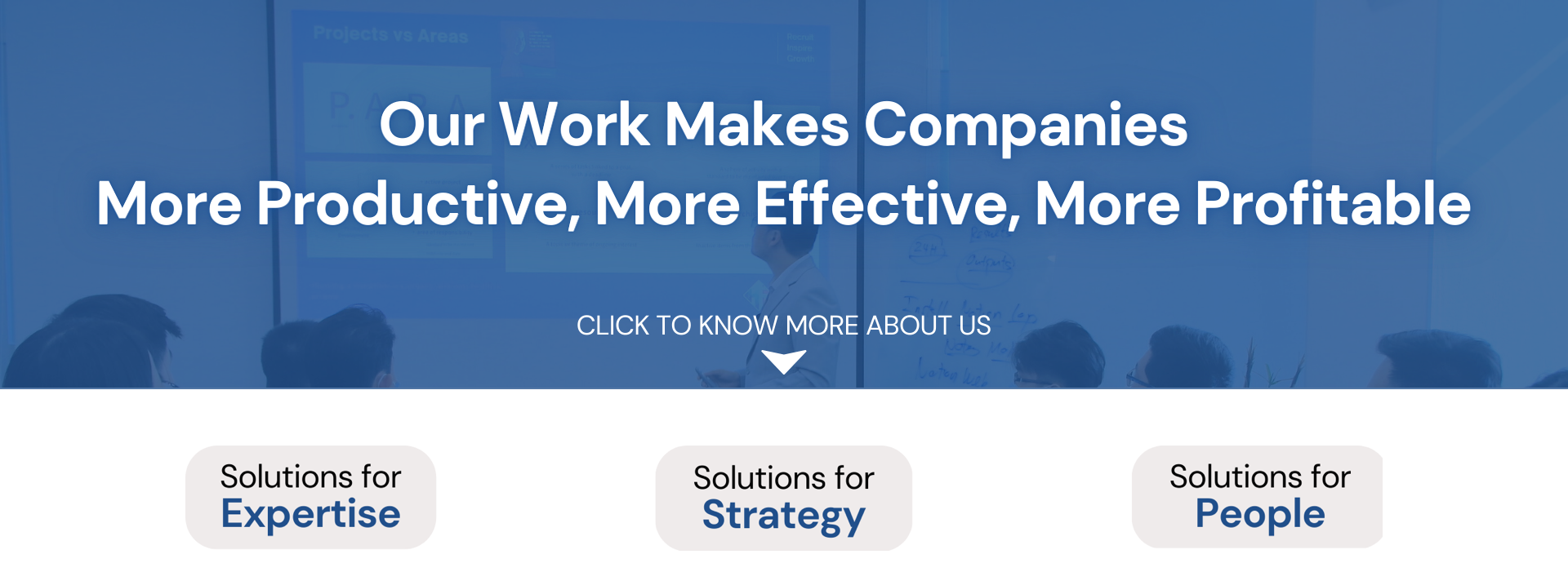


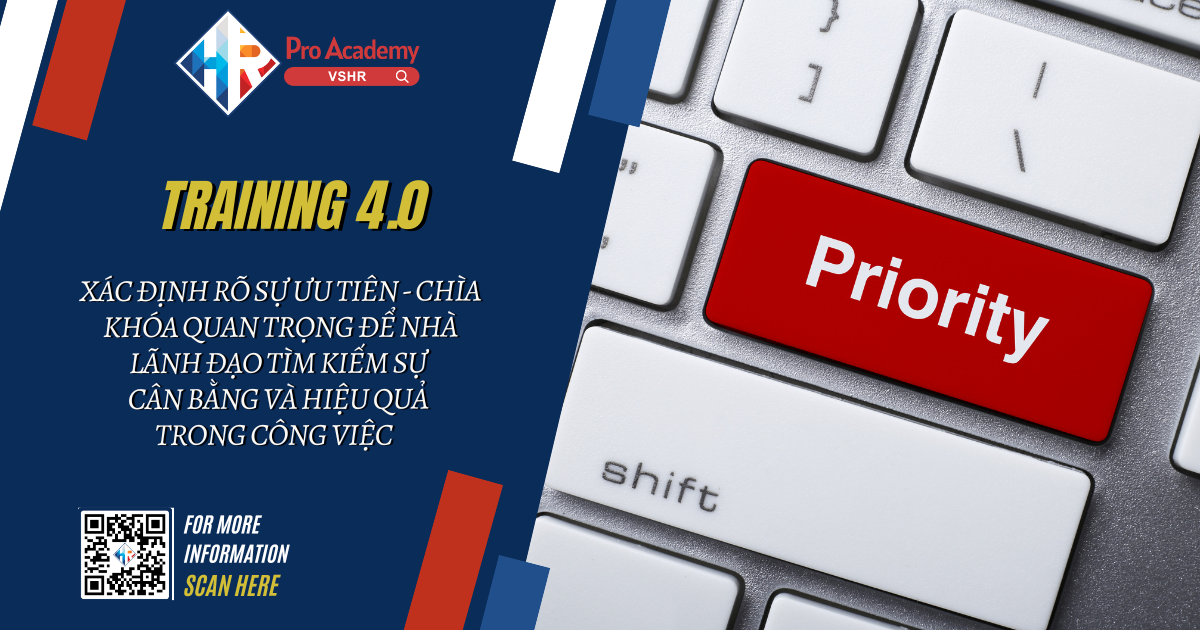


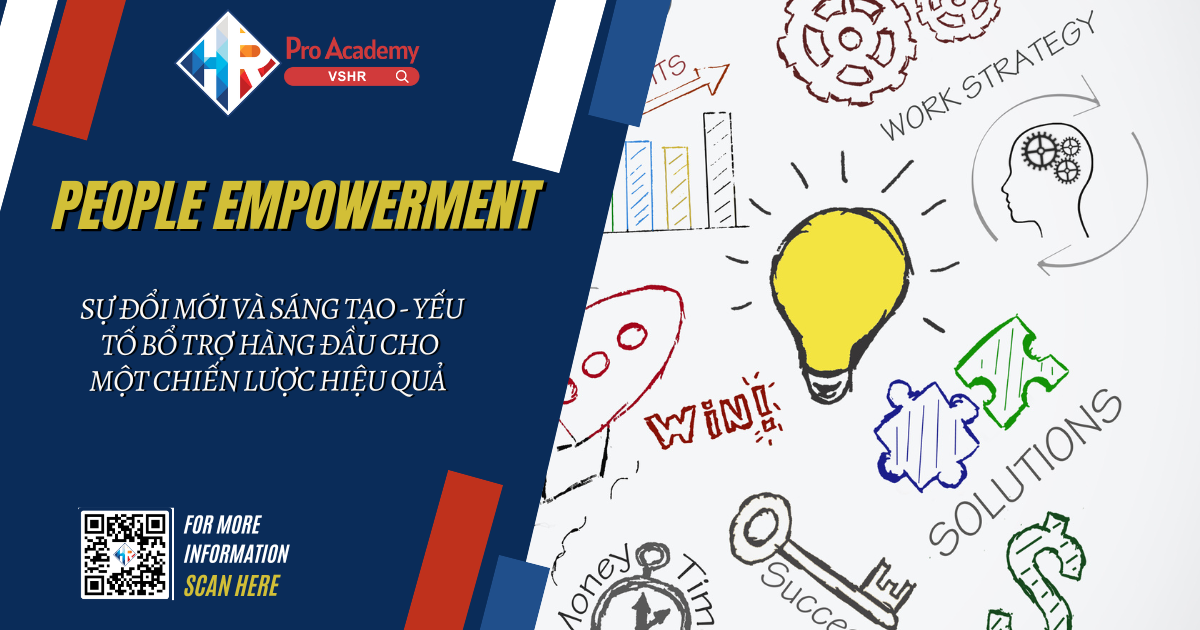


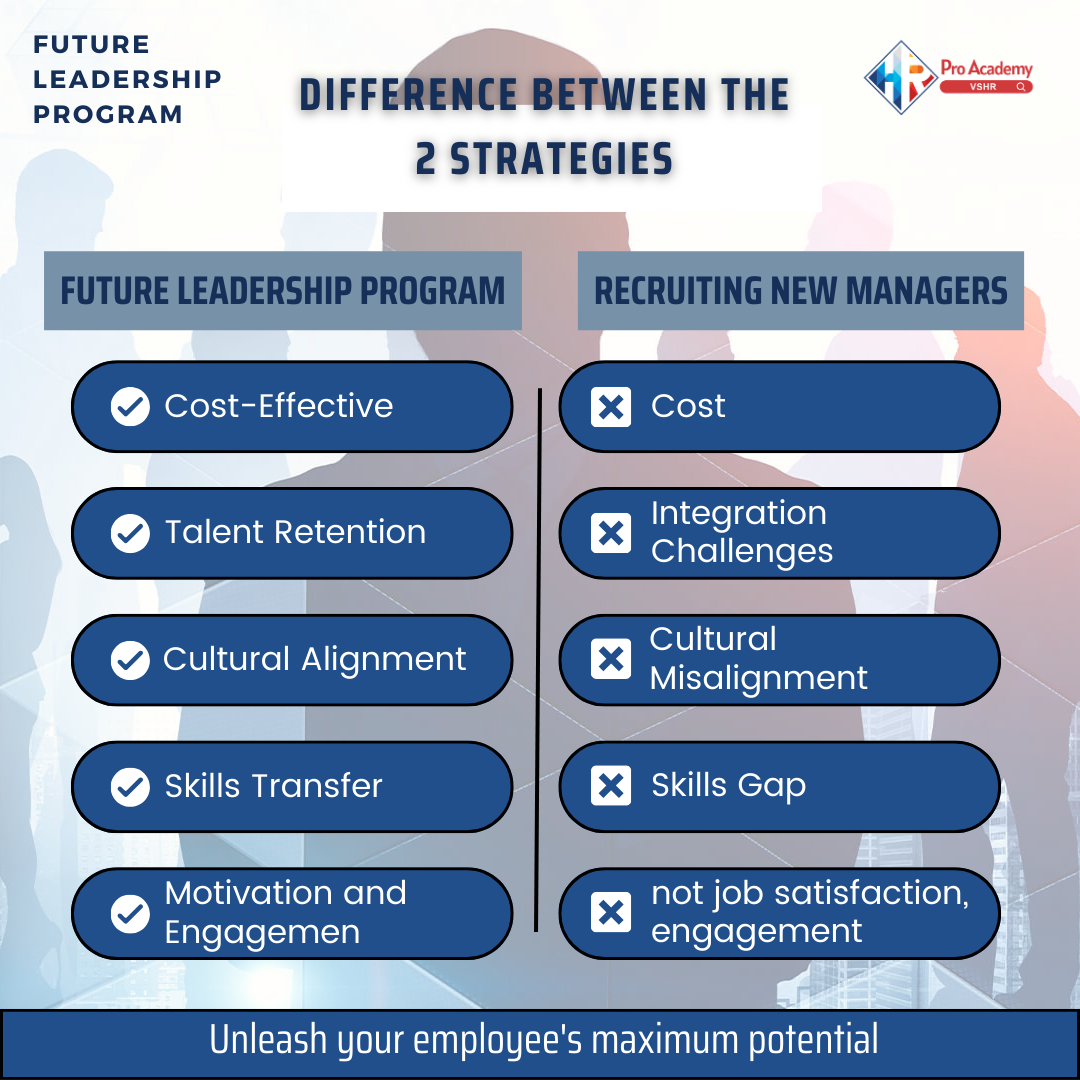

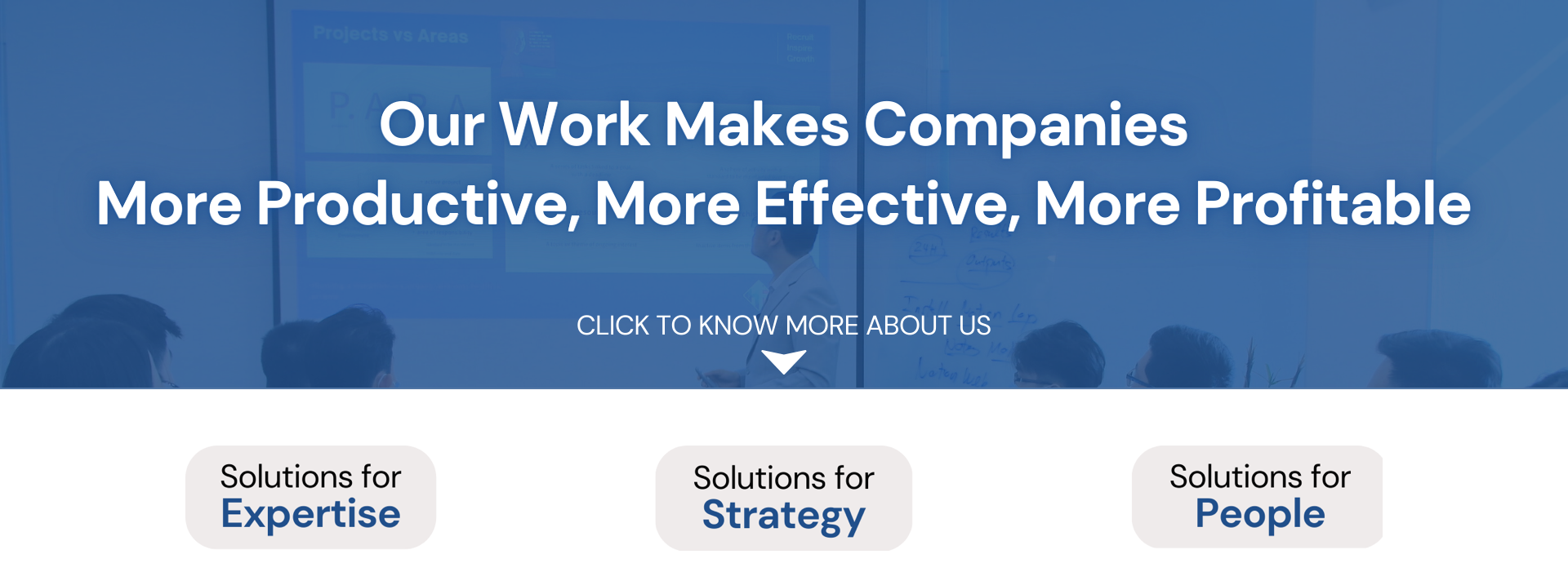

 RSS Feed
RSS Feed








